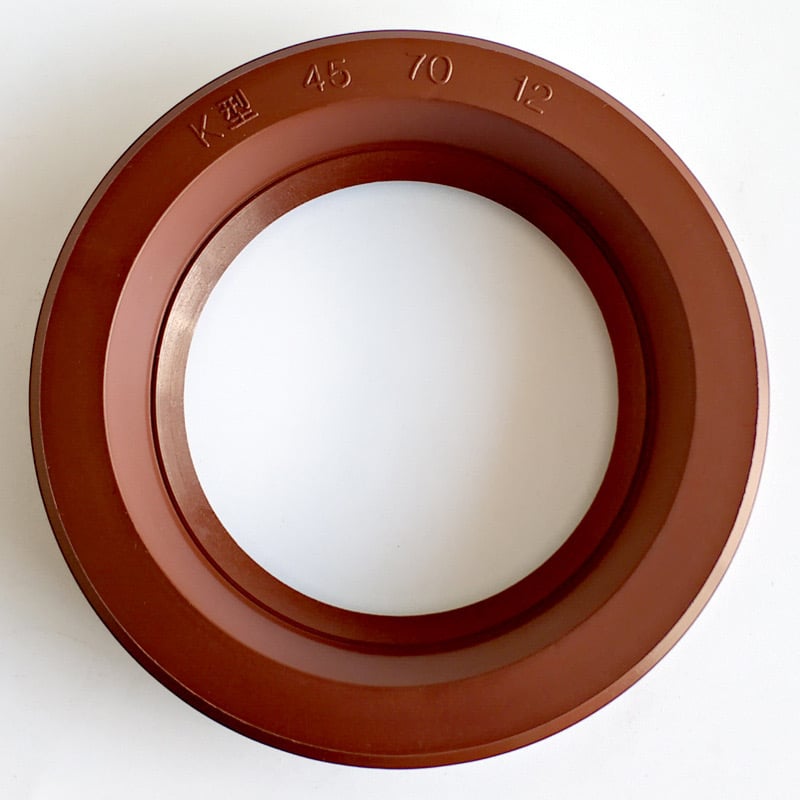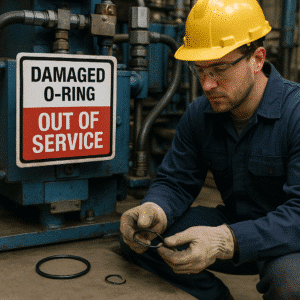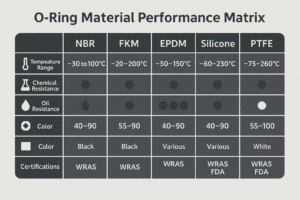Struggling with oil leaks, dust intrusion, or short-lived seals? It might be time to switch to a skeleton oil seal—a trusted solution in high-speed and high-pressure systems.
Skeleton oil seals provide enhanced shaft sealing with internal metal reinforcement, extending service life and performance.

Read on to learn what they are, how they work, and how to choose the right type for your machinery.
What makes a skeleton oil seal different from a standard seal?
Unlike regular rubber seals, a skeleton oil seal includes a metal insert that reinforces the sealing structure.
This “skeleton” helps maintain lip pressure and positioning even under misalignment, pressure, and rotation.

Also known as radial shaft seals, they combine flexibility from rubber (NBR or FKM) with the strength of steel—ideal for motors, pumps, and gearboxes.
Looking for high-strength applications? Explore our Selo de óleo esqueleto TG4 with dust lip protection.
What types of skeleton oil seals are available?
There’s no one-size-fits-all in dynamic sealing. Each application requires a tailored design.
| Tipo | Estrutura | Lábio de poeira | Uso comum |
|---|---|---|---|
| TG4 | Lábio duplo com lábio de proteção contra poeira | ✅ | Motores, bombas, caixas de engrenagens |
| TC | Lábio duplo com concha de metal | ❌ | Uso industrial padrão |
| Tipo K | Perfil compacto | ❌ | Habitação estreita, áreas com espaço limitado |
| Tipo de divisão | Open-style, easy install | ✅ | Field repairs and maintenance |
Nosso TC Skeleton Oil Seal is ideal for standard rotation sealing without dust interference.
Which materials are used in skeleton oil seals?
Rubber alone isn’t enough. Material choice defines durability and performance.
| Material | Nome completo | Propriedades | Caso de uso |
|---|---|---|---|
| NBR | Borracha nitrílica | Resistente a óleo, acessível, -40°C a +120°C | Motors, compressors, low-temp |
| FKM | Fluorelastômero | Resistente ao calor e a produtos químicos, -30°C a +200°C | Gearboxes, engines, high-temp |
Nosso Selos FKM are ideal for chemical and thermal extremes. NBR fits general industry needs.
Where are skeleton oil seals commonly used?
Skeleton oil seals are standard in:
- Motores elétricos
- Bombas hidráulicas
- Automotive crankshafts
- Gearboxes
- Industrial fans and blowers
Need guidance? Our Tabela de referência cruzada de retentores de óleo helps match OEM parts like National and SKF.
How do I choose the right type?
Use this checklist to avoid mismatches:
| Fator | O que verificar |
|---|---|
| Diâmetro do eixo | Must match seal’s inner diameter |
| Housing Bore | Fit outer diameter tightly |
| Speed Rating | NBR ≤15 m/s, FKM supports higher speeds |
| Temperatura | Use FKM above 120°C |
| Media Resistance | FKM needed for fuel/solvent exposure |
| Dusty Conditions | Use types with dust lips (TG4, Split) |
For tough environments, we recommend the TG4 double-lip design with NBR or FKM rubber.
Conclusão
Skeleton oil seals combine durability, stability, and high sealing integrity. The right type ensures reliability across electric, hydraulic, and rotating systems.
Request Custom Sizes or Bulk Supply
We offer OEM, split-style, and dual-lip variants for all sectors.
📩 E-mail: [email protected]
📱 WhatsApp: +86 17622979498
Related topic
Guia de vedação de óleo: 5 dicas importantes para operações confiáveis (2025)
High-Temperature Sealing: How to Prevent Failures in Extreme Conditions?
Como identificar o retentor de óleo correto pelo número da peça ou tamanho?


